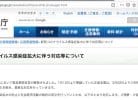1. What is a “Multi-Multi Claim”?
“Multi-multi claim” means “any dependent claim that refers to more than one other claim in the alternative (‘multiple dependent claim’) which depends from any other multiple dependent claim”.[1] A multi-multi claim hence exponentially increases the variety of claims a single patent could contain. It may be called a “complex multiple” claim.
Example
Claim 1. An apparatus comprising A.
Claim 2. The apparatus of Claim 1, further comprising B.
Claim 3. The apparatus of Claim 1 or 2, further comprising C.
Claim 4. The apparatus of any preceding claim, further comprising D.
In this case, Claim 3 is a “multiple claim” and Claim 4 is a “multi-multi claim.”
You can check if any of your Japanese language claims is multi-multi using “Multi-Multi Claim Checker (Japanese only).”
2. May I use multi-multi claims in Japan?
Multi-multi claims are no longer allowed in patent and utility model applications filed in Japan on or after April 2022, similar to in the United States of America. The United States Patent & Trademark Office (USPTO) rejects multi-multi claims, as well. It also charges a hefty price for multiple dependent claims.[2] However, some jurisdictions like the EPO allow “multi-multi claims,” so be careful of carrying any over from an application where such claims were allowed.[3, p. 3]
3. What Should I Do?
Obviously, check claims before filing an application or national phase entry in Japan. If you find that your patent application contains any multi-multi claim after filing the application, let’s file a Voluntary Amendment, ideally, by the time you file the Request for Examination.
Beware–patent applications of some jurisdictions entitled to serve as a basis for priority under the Paris Convention or PCT applications might, depending on the local rules, contain multi-multi claims. Please consider changing the citation relations when filing an application with a claim of priority from such a jurisdiction under the Paris Convention or when entering a PCT application into Japanese national phase.
In addition, please make sure you do not inadvertently introduce multi-multi claims when responding to a Notice of Reasons for Refusal (Office Action).
5. I Filed an Older JP Application with Multi-Multi Claims. Will There Be a Problem?
Only those filed on or after April 1, 2022 could run into trouble.[1] Be careful if you are filing a Divisional Application thereafter, in case it has old “multi-multi claims” in it. Incidentally, PCT international applications can still be examined with multiple-multiple dependency claims in them.[3, p. 8]
* The information provided on this website is for informational purposes only and is not intended as legal advice.
** For questions or consultation, please contact us for more information.
Contact: Taro Yaguchi
Sources
[1] Japan Patent Office. “Restriction of Multi-Multi Claims.” March 9, 2022. Accessed March 24, 2022.
[2] United States Patent & Trademark Office. Fee schedule for 37 CFR §1.16(j), as of October 24, 2023, $860 for Large Entities.
[3] JPO Examination Standards Office. “マルチマルチクレーム制限について [Multi-multi claim limits]” PDF handout. https://www.jpo.go.jp/system/patent/shinsa/letter/document/multimultichecker/multichecker.pdf found on JPO, “マルチマルチクレームの制限について [Multi-multi claim limits],” under マルチマルチクレーム制限について(説明資料)(PDF:887KB). March 2022. Accessed March 24, 2022.






